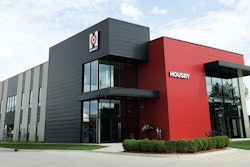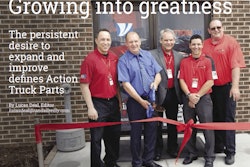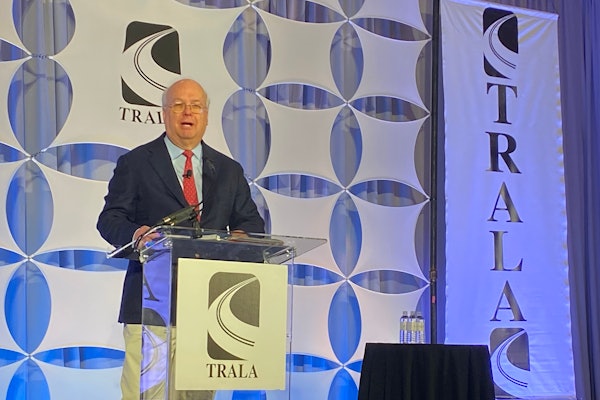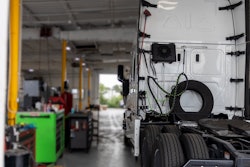
In a year when in-store customer interaction has become increasingly challenging and potentially dangerous, heavy-duty parts distributors have been forced to lean heavily on their delivery capabilities to serve customers.
Unlike other retail channels, parts distributors were fortunate in the early days of the COVID-19 pandemic that their customer requests for product deliveries did not require a total overhaul of their go-to-market strategy. On-time delivery has been a crucial tenet of customer service in the parts business for ages. Despite familiarity with the work, the extent at which distributors have been expected to deliver goods over the last year has been nearly unfathomable.
For those managing the elevated workload, such as warehouse workers, dispatchers and delivery drivers, the importance of efficient business practices has never been more evident.
“We used to have a lot of customers who would call and order a part and then come pick it up. Some still do that, but over the last five or six months, we’re definitely seeing a lot more of them wanting us to bring [the parts] to them,” says Nick Seidel, vice president, Action Truck Parts.
“We’ve always been a business where if a customer calls and needs something today, our guys know whoever is available should just get in a truck and take it to them. We’ve created that expectation. We want to keep doing that,” Seidel says.
But with so many more customers choosing to have their parts delivered, Seidel says Action Truck Parts is at a crossroads. It is receiving delivery orders at a rate that nearly exceeds its delivery infrastructure. “We’ve kind of outgrown our old way of doing things,” he says.
 Action Truck Parts and Seidel Diesel Group have 14 delivery vehicles on the road in Chicagoland each day.
Action Truck Parts and Seidel Diesel Group have 14 delivery vehicles on the road in Chicagoland each day.On that note, Seidel is not alone. In a year that has turned prompt delivery from a value-add into an absolute necessity, parts distributors are learning the key to running an efficient delivery business isn’t just having a fleet of trucks and available drivers — it’s about how those assets are utilized once on the road.
With so many orders coming in, distributors say they can’t afford to have drivers going back and forth over the same roads and routes each day. Backtracking and rerouting takes time, burns fuel and can erode customer trust.
“When it comes to parts availability, the one thing we always see from our customer surveys is when customers order parts, they expect to receive them the same day,” says Housby General Manager Tyler Olson. “Which means if we’re going to offer same-day delivery, we have to do that job well to maintain the level of service our customers expect.”
Olson says Housby overhauled its delivery process in 2019, adding a dispatcher in its Des Moines, Iowa, warehouse who works with warehouse associates and drivers to help pick parts, loads trucks and devise delivery routes. Olson says before the position was created drivers were generally tasked with designing their delivery routes. He says that worked for a while, but as drivers became busier and routes became longer, the need for more assistance became clear.
“It was just too much for them to do,” says Olson. “We wanted them to focus on driving and being safe.”
Seidel wants the same for his drivers. He says Action’s delivery fleet also delivers products for the other divisions within its parent company, Seidel Diesel Group, and has 14 vehicles running on Chicagoland roadways each day. In a high-traffic, high-density market, Seidel says it’s too much to ask for drivers to also develop their own routes and be expected to communicate delivery data with customers. Like Housby, Action Truck Parts has an in-house dispatcher to assist with the former, and says he is close to finding an ideal solution for the latter.
“That’s our biggest issue — the customer service aspect of it,” he says. “We’ve been pretty good about building routes that make sense. Where we’re having trouble is when customers call in and ask, ‘What’s the ETA on my parts?’ and we have to play phone tag with the driver.”
And solutions do exist both for routing and customer communication.
Northeast Great Dane recently onboarded Elite Extra, a cloud-based asset tracking and routing platform designed specifically to address the challenges faced in delivery optimization, says Kevin Kotch, director of parts operations.
Kotch says he was drawn to the tool for the same reason as Seidel; he wanted a better way to communicate order progress to customers. Elite Extra uses GPS to enable distributors to pinpoint their drivers at any time. It also offers GPS route optimization, real-time driver directions through any mapping service, business management system integration and a multitude of analytics to enable a distributor to monitor the effectiveness of its delivery fleet.
“Once we started testing it out and saw all of the features it was kind of a no brainer,” Kotch says.
And though Northeast Great Dane has only been using the tool a few months, early returns are great.
“The transparency between us and the customer is so big,” says Kotch. “We can make that promise that the parts are on the way and give them a real-time ETA. When you can do that and then follow through, you know the customer will come back to you.”
Similar programs exist from other suppliers as well.
AutoPower President Mike Mallory says his company’s business management system features a Parts Delivery tool that syncs customer orders with invoices to help stage product for deliveries based on pre-designed routes and provide better visibility into driver progress once they hit the road. Customers also can sign off on deliveries through an app on the driver’s cell phone, and the system provides “communication back to the distributor’s server with time/date stamp and the customer’s signature when the delivery occurred for later printing on the customer’s invoice.”
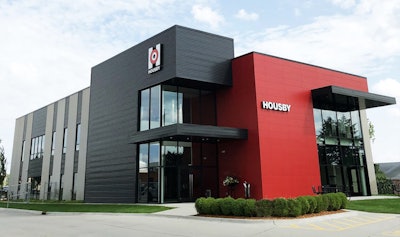 Adding a dispatcher in Housby’s Des Moines, Iowa, warehouse has dramatically improved delivery driver productivity.
Adding a dispatcher in Housby’s Des Moines, Iowa, warehouse has dramatically improved delivery driver productivity.But parts distributors who aren’t using third-party solutions shouldn’t be discouraged. Olson and Seidel say their dispatchers went a long way toward building better routes for their drivers. Just having someone on-site offering guidance and instruction on how to load a truck can save time once a driver hits the road.
A centralized dispatcher also goes a long way in managing emergency and hot shot deliveries, making sure drivers never walk out the door without overlooking another potential order that can be made on a single route. Olson says before adding his dispatcher, Housby’s hotshot drivers would regularly be out after 5 p.m. each day. Now he says they’re generally done by 4 p.m.
“Having someone to coordinate what needs to go out makes such a big difference,” Olson says. “We don’t want drivers going out to West Des Moines and then turning around and going back out 15 minutes later.”


